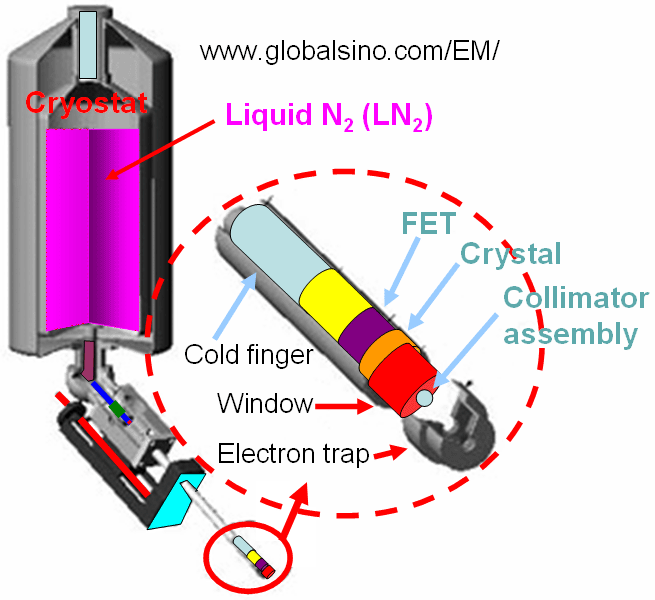=================================================================================
The self-contained vacuum system is also called a cryostat and has many applications [1, 2]. For instance, in EDS detectors, a cryostat can be integrated with cryogenic pumping created by liquid nitrogen (LN2) cooling method as shown in Figure 3922.

Figure 3922. Schematic illustration of EDS detector.
Ideally, the number of charges n per incident photon with energy E (eV), generated in an EDS detector, can be given by
n = E/ε ------------------- [3922]
Here, ε is equal to 3.86 eV for a Si EDS detector at 77 K and 2.96 eV for a Ge detector. For instance, if the detector receives one photon with an energy of 10 keV, ~2600 electrons (i.e. an extremely small charge of ~4 x 10-16 C) are then obtained from the detector. Therefore, to measure such small charge accurately, it is very important to minimize thermal noise contributions. For this reason, the detector is usually cooled down to the liquid nitrogen temperature. For Si(Li) EDS detectors , the main functions of the LN2 device are to reduce thermal e-h pair, to prevent the Li atoms from diffusing, and to reduce noise in the FET preamplifier.
[1] S. M. George, A simple and versatile liquid nitrogen cooled cryostat on a differentially pumped rotary feedthrough, J. Vac. Sci. Technol. A 4, 2394 (1986); https://dx.doi.org/10.1116/1.574086
[2] H. L. Chhatwal and T. R. Goswami, A l iquid nitrogen cooled
sample stage for a scanning
electron mi croscope, Cryogenics, 32(7) 679 (1992).
|